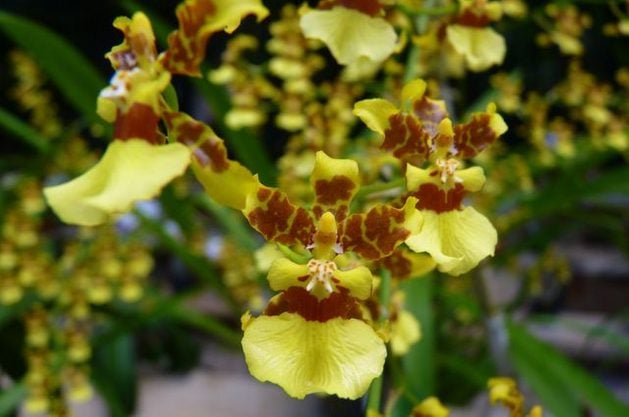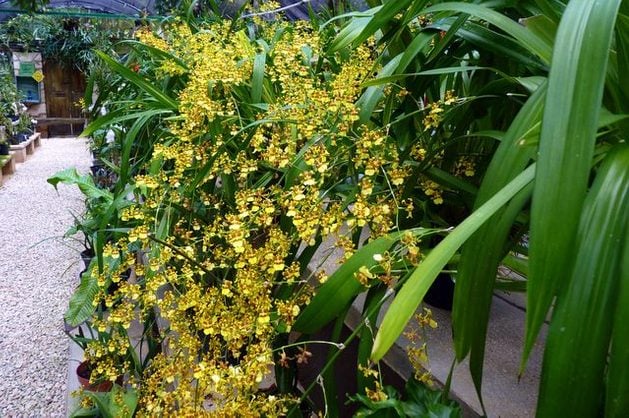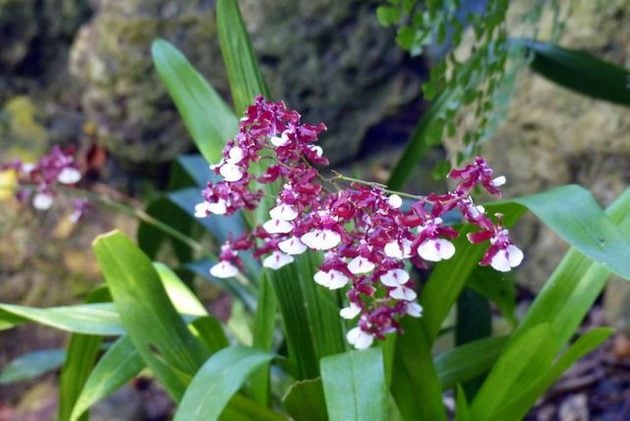Growing Orchids: Oncidium, or Dancing Lady
Updated: Apr. 24, 2020
Fill your home with dancing sprays of delicate blossoms when you start growing orchids in the Oncidium family.
If you’ve mastered the skill of growing orchids like phaelanopsis and dendrobiums, you might be ready to step up to more challenging varieties like ondidium orchids, fancifully known as “Dancing Ladies.” These orchids are a bit pickier about light, temperature, and watering requirements, so do your research carefully before giving them a try. Here are some basics to get you started.

About Oncidium
Oncidium (say “on-SID-ee-um”) orchids are New World orchids, found in South and Central America and the West Indies, with one species in South Florida. There are over 300 species of oncidiums, but the most popular for home growers are the yellow or pink-flowered varieties sold simply as “Dancing Lady.” These are generally large plants, with long and abundant leaves. They flower in late summer or early fall, with dozens of blooms on multiple stems that can last for months. After they finish blooming, they enter a growth cycle, where they put on new leaves. They’re dormant in the early summer as they prepare to bloom again.
Temperature
Dancing Lady orchids like warm temperatures and moderate humidity. They prefer a minimum of 80 degrees F during the day, with at least 40% humidity. At night, they can tolerate temperatures down to about 55 degrees F. In some areas, you may find it hard to maintain the required temperatures and humidity during the winter months without a greenhouse. However, if you can keep oncidiums in a warm room and provide extra humidity (setting the pot on a shallow tray filled with pebbles and water helps), growing orchids in this family may be a possibility.
Light
Oncidiums tolerate more direct light than some other orchids. They do well in east or west windows, though it doesn’t hurt to soften the light a bit with a sheer curtain. Healthy Dancing Lady orchids have medium green leaves; dark green leaves indicate they aren’t getting enough sun.

Water
Watering oncidiums properly can get tricky. They are very susceptible to root rot, so like other orchids they should never be left sitting in water. In fact, it’s best to let the potting mix dry out about halfway down the pot before watering. Stick your finger or a wood popsicle stick down into the mix. If it still feels wet, wait a few days more. The time between waterings will vary depending on the time of year and the plant’s growth cycle.
Potting and Fertilizing
Orchids need quick-draining potting material. Specially-designed orchid mixes made of bark, sphagnum moss, and other loose fillers are ideal. Do not use traditional potting soil or soil from your garden. Ensure the pot has holes for good drainage. Feed with a weak fertilizer once or twice a month. It’s better to underfeed than overfeed when growing orchids.
Maintenance
When the flowers begin to fade, allow them to drop naturally. Don’t remove the flower spike until it has turned completely brown and dry. Oncidiums prefer to be somewhat pot-bound, but may need re-potting every couple of years. This requires a cautious hand so as not to break the roots. Do a web search before re-potting to find a site that can walk you through the process.

Interested in more on growing orchids? See our guide to Orchids 101 here.